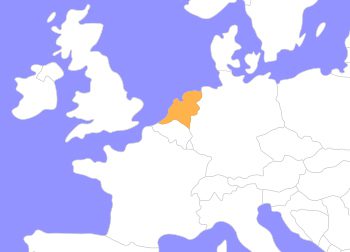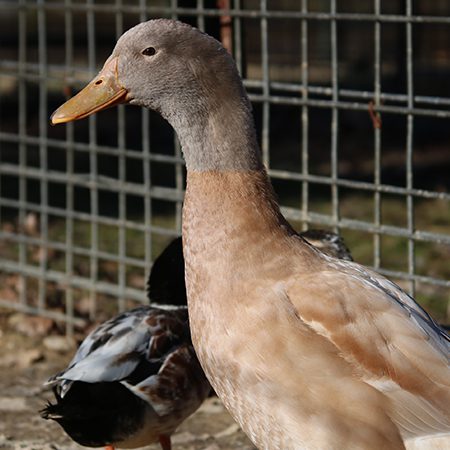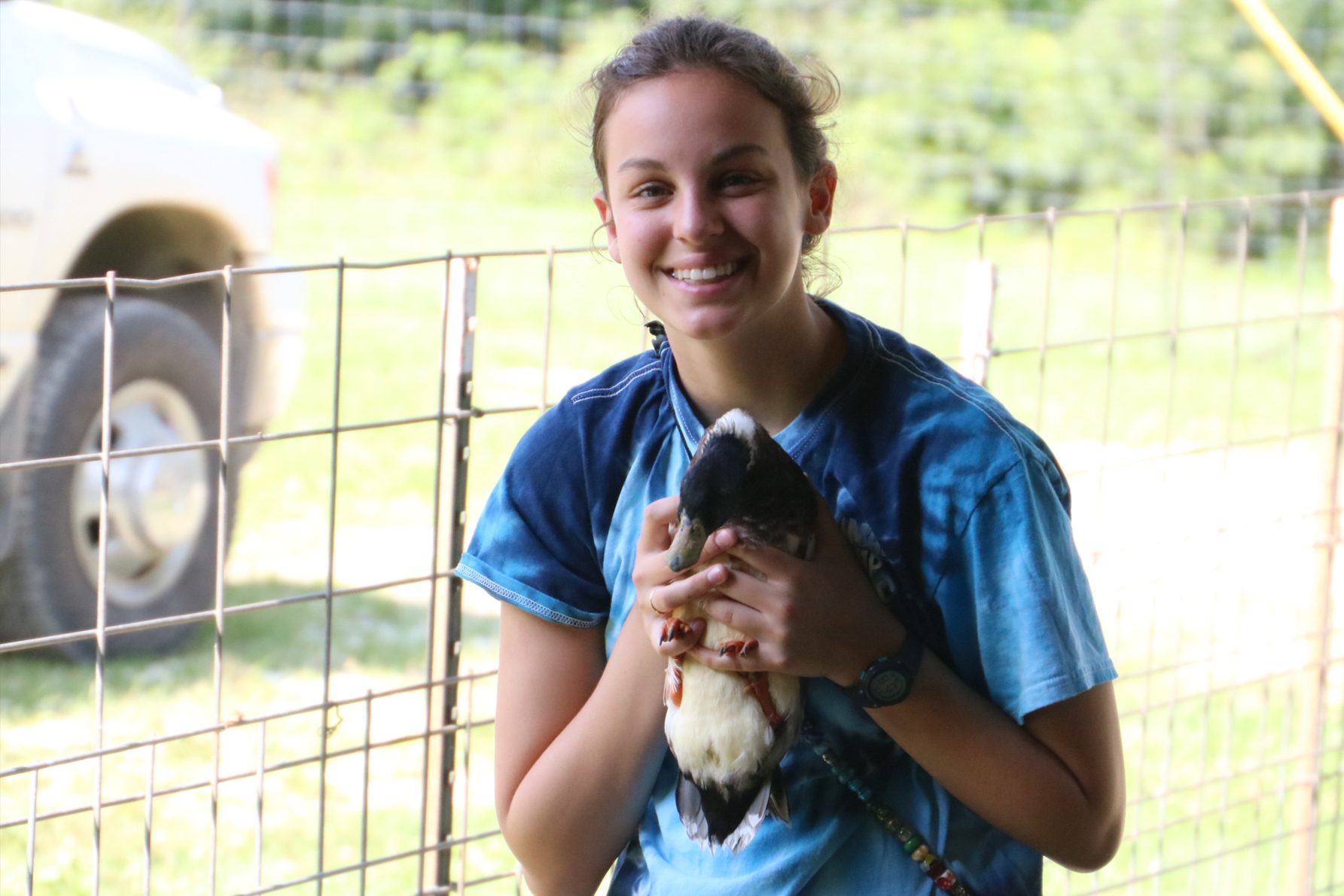Call Duck
Anas platyrhynchos domesticus
The call duck is a bantam breed of domesticated duck raised primarily for decoration or as pets. Call ducks look similar to some other duck breeds, but are smaller in size. Call ducks were initially used in hunting, where their own calls and quacks would attract wild ducks towards the hunter's guns. This practice has almost entirely been replaced with artificial duck calls, with call ducks now being kept primarily as pets.
The first recorded mentions of the breed are from the Netherlands where it was used as a decoy and known as a coy or decoy duck. The high-pitched distinctive call was used to lure other ducks to larger wild ducks into funnel traps and then be able to fit through the trap exit hole and escape the trap, leaving the larger ducks inside.

Call Ducks are native to the Netherlands, and have since been transported throughout Europe and North America.
HABITAT -They are found in wetlands, marshes, ponds, rivers, and lakes.
DIET -They are omnivorous eating small fish, fish eggs, crayfish, aquatic plant material and algae.
FUN FACT -Ducks have highly waterproof feathers due to the feathers interlocking nature and waxy coating.
SOCIAL BEHAVIOR -They are very social animals, males and females will live in pairs with their ducklings.
ACTIVITY -They are diurnal, but can show nocturnal tendencies.
PREDATORS -Predators include coyote, fox, lynes, wildcat, cougars, and wolves.
SIZE -Standard weight is as for drakes: old 26oz, young 22oz, and for ducks: old 20oz, young 18oz.
RELATIVES -Relatives include other waterfowl such as geese and swans.
CONSERVATION -Call ducks are domesticated and Not Listed on the IUCN Red List.
Cub Creek Animal Care Information
Housing - Our ducks live in our luxurious barn! During the days, they get to roam around the nursery stalls. They will spend time frolicking in kiddie pools, and laying in the grass. In the evening they waddle their way back into stalls filled with hay and shavings for bedding.
Diet - Our ducks are provided with a constant supply of game bird finisher feed, which provides them with all the nutrients they need to be healthy. Their enclosures also include Nelson water bowls that continuously provide fresh water for our birds. They will also be given lettuce as a treat on occasion.
Enrichment - Our ducks are well accustomed to human interaction. Much of this can be attributed to the continual social interaction with campers in the summertime and our staff in the offseason! They regularly enjoy play time in their splash pools on hot summer days!


